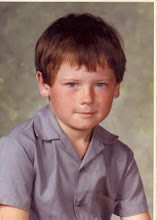Massive Cancer Information Giveaway
By Aaron Rowe June 21, 2008 9:01:44 PM
http://blog.wired.com/wiredscience/2008/06/massive-cancer.html
Scientists at GlaxoSmithKline spent a small fortune studying cancer cells, and then gave most of their precious information away -- for free -- to the research community. That massive donation, which was announced on Friday, could accelerate the discovery of new oncology drugs and blood tests by giving brilliant, but underfunded, researchers a chance to pick through boatloads of data.
For the pharmaceutical giant, sharing makes a lot of sense: They rely upon academics and small companies to do pioneering work -- identifying new targets for medications, discovering early warning signs, and figuring out the underlying biological malfunctions that cause cancer. Once those groundbreaking studies have been done, Glaxo and other large corporations can step back into the picture and create new products.
Most of the data was gathered by microarrays, chips that can record lots of biological information. Its new home is the caBIG website, a massive repository of genetic information run by the National Cancer Institute. Glaxo gave the online community information from three hundred different sets of cells, which were taken from diseased breast, prostate, lung and ovarian tissues.
http://blog.wired.com/wiredscience/2008/06/massive-cancer.html
Scientists at GlaxoSmithKline spent a small fortune studying cancer cells, and then gave most of their precious information away -- for free -- to the research community. That massive donation, which was announced on Friday, could accelerate the discovery of new oncology drugs and blood tests by giving brilliant, but underfunded, researchers a chance to pick through boatloads of data.
For the pharmaceutical giant, sharing makes a lot of sense: They rely upon academics and small companies to do pioneering work -- identifying new targets for medications, discovering early warning signs, and figuring out the underlying biological malfunctions that cause cancer. Once those groundbreaking studies have been done, Glaxo and other large corporations can step back into the picture and create new products.
Most of the data was gathered by microarrays, chips that can record lots of biological information. Its new home is the caBIG website, a massive repository of genetic information run by the National Cancer Institute. Glaxo gave the online community information from three hundred different sets of cells, which were taken from diseased breast, prostate, lung and ovarian tissues.


1 Comments:
For the pharmaceutical giant, sharing makes a lot of sense...
Indeed. Keep the scientists busy on the pharma angle.
I notice that the first cancer on their study list is breast cancer. How different would our world be if massive medical organizations were willing to share information like this, regarding the connection between breast cancer and bra wearing? The correlation is stronger than that between smoking and lung cancer. It has been known for over ten years.
Women who never wear bras have breast cancer incidence of 1:168.
Bras worn less than 12 hours per day: the rate is 1:152.
Bras worn 12 hours per day: the rate is 1:7.
Bras or other constrictive garments worn to sleep, as well as all day: the rate is 3:4.
At no cost other than perhaps some new blouses and sweaters, a typical North American woman can reduce her breast cancer risk about 20-fold - not 20%, but 20-fold. And this is not treatment, this is prevention.
By arcolaura, at Tuesday, 24 June, 2008
arcolaura, at Tuesday, 24 June, 2008
Post a Comment
<< Home